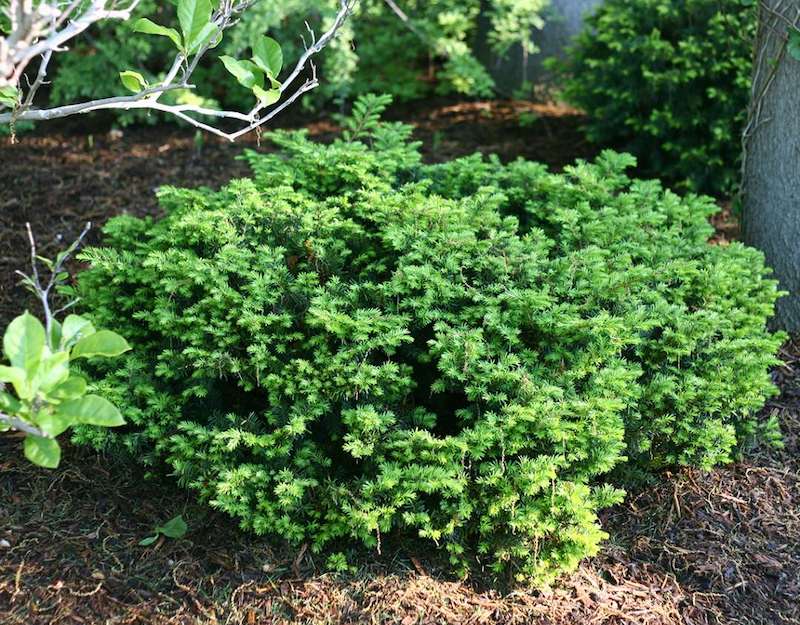Beginning the year following planting, growers may opt to apply fertilizer to yews annually each spring to encourage vigor. Once yews are established, fertilizer may only be warranted under certain circumstances. Yews may benefit from fertilizer if any of the following is true: it is a young yew and strong growth is desired, new growth is limited or slow, soil is very sandy, poor, or has a high clay content, and needles are not a healthy green color. Fertilizer also aids recovery if the plant has suffered significant damage from insects or other sources. Before fertilizing, make sure there are no problematic environmental conditions to address first.

How to Fertilize Yews
Yews prefer a near-neutral soil, performing best when the pH is between 6 and 8. A soil test prior to planting is the best way to determine with certainty if the soil ought to be amended prior to planting. Blend well-rotted compost or manure in with the soil at planting to improve soil texture and set the yew up for nutritional success. Apply a slow-release, granular fertilizer by measuring it out according to the rate recommended on the label and sprinkling that amount over the root zone. Avoid sprinkling fertilizer on foliage or uneven application, as this can lead to foliage or root burn. Water in the fertilizer in order to activate it and ensure nutrients become available for uptake.
Best Time To Fertilize Yews
The best time to fertilize yews is in early spring to late spring once new growth just begins to emerge. Avoid summertime applications, as this can cause a flush of tender new growth vulnerable to winter damage. You can begin fertilizing yews the year following planting. In general, an annual spring fertilization is all that is warranted. Established yews may also only need fertilizer every other year or simply when extra nutrition is required every several years.

Best Fertilizer For Yews
The best type of fertilizer for yews is often a complete, slow-release fertilizer labeled for trees or shrubs and evergreens in particular, like Espoma Organic Evergreen-tone 4-3-4. Fertilizers with comparable ratios like 16-4-8, 3-1-1, or 3-1-2 are also typically acceptable if applied properly, according to directions on the label.
Yews Fertilizing Tips
- Mulch and soil amendments can minimize fertilizer needs
- Fertilize annually in spring with a slow-release option
- Avoid late-season fertilization
Warnings
-Always wear protective gloves and a face mask when handling chemical fertilizers.
-Closely follow all directions and storage guidelines that are on the fertilizer label.
 |
Author Angela Ryczkowski - Published 4-10-2023 |
